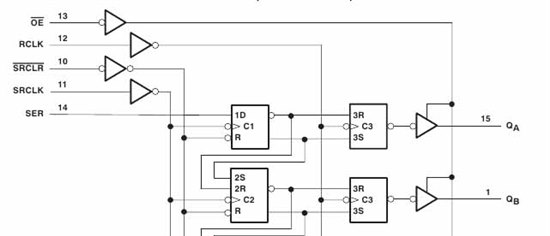Hello all,
Newbie here.
I'm putting together a simple website regarding some basic electronic/logic circuits, and one of the sections is on shift registers.
(I'm not an engineer, just an old hobbiest dating back to the S100 bus)
For teaching (and learning for me) purposes I've put together a simple circuit (chip, connectors, resistors and LEDs), built it, and interfaced it to an Arduino.
The site includes a series of programs that demonstrate, very simply, how shift registers work, and what you can do with them.
I would like the explanations to be as accurate as possible, so I'm going over every detail. The Texas Instruments datasheet on the 74HC595 is the best datasheet out there because of the logic diagram - the workings are VERY clear (my thanks to the people who wrote the datasheet).
But there is one part of the datasheet that is confusing me, thus my presence here.
Long-winded introduction, now to the two questions:
1. The data sheet states that the storage clock is a "D-type storage register". I'm assuming that it means "based on a D-type flip-flop".
Here is the relevant section of the datasheet:
But the Wiki explanation of flip-flops gives a slightly different appearance for a D-flip-flop -
One data input, one clock, one each of set/reset, and Q and Q complement.
Am I right that when it says "D-type storage register" that it means "based on D-type flip-flops"?
Does the appearance (number of connected leads) of the flip-flop matter?
Or do the workings (logic table) of the flip-flop determine its name?
2. I can't find anything in the datasheet regarding the type of flip-flop that is used in the first level shift register.
Based on its leads, it seems like it would be a classic "D-type" flip flop. Is that right? Or is it another type?
In advance, I thank anyone who would wade through my verbose questions.
Tim


